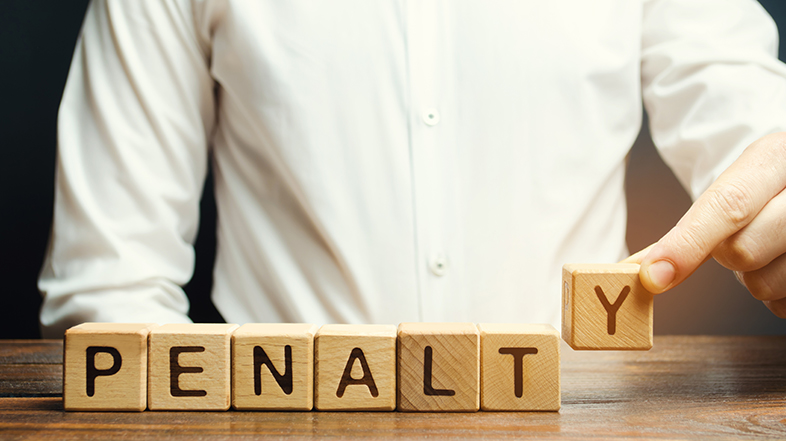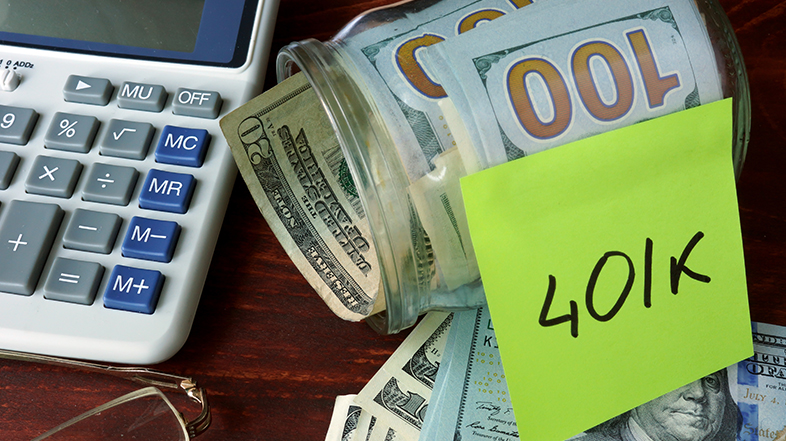
401(k) Early Withdrawals May Cost You More Than You Think
Americans are taking early withdrawals from their 401(k)s at record rates “across different ages and income levels.”¹
According to Capitalize, “Half of Americans have made early withdrawals from retirement savings. […] These withdrawals will cost Americans $6.12 billion in penalties to the IRS in 2023.”²
A separate report from Bank of America found “the number of 401(k) participants accessing their retirement savings early increased 27% since the beginning of this year.”³
In addition to simply needing extra money to cover current expenses or emergencies, people are taking early withdrawals when they change jobs.
Marketing Science reports, “41.4% of employees leaked by cashing out 401(k) savings at job separation, most draining their entire accounts.”⁴
Rather than rolling over their 401(k)s, these investors faced penalties for early withdrawals.
It’s not ideal to touch your retirement savings.
But if you must take an early withdrawal, you want to withdraw the money with the least amount of impact on your finances – and your financial future.
Penalties for Taking an Early Withdrawal

Even if you feel pressed to dip into your 401(k) savings before you hit retirement age, pause and consider the penalties.
Let’s start with taxes. The IRS requires automatic withholding of 20% of a 401(k) early withdrawal.
For instance, if you withdraw $15,000 from your 401(k), you may only get about $12,000 after taxes are taken out.
Along with the withholding taxes, the IRS will also hit you with a 10% penalty if you’re under the age of 59½ on all funds withdrawn when you file your tax return.
The amount withdrawn will also be taxed as ordinary income for the year the money was taken out, which could push you into a higher tax bracket and force you to pay even more taxes.
Let’s return to the example. Let’s say you’re under 59½ and you withdraw $15,000 from your 401(k).
Now we’re up to 30% in taxes and penalties.
You’re going to get only about $10,500 of the $15,000 early withdrawal.
You’ve lost 30% of your money.
Is it worth it?
Can You Avoid the 10% Penalty?

10% is a considerable chunk, so before you take an early withdrawal, see if you qualify for an exemption on the 10% tax penalty.
There are a few ways to qualify:
- The first way is if you qualify for a substantially equal periodic payment plan. With this plan, retirement plans can be cashed out penalty-free. But this is only if you take annual distributions for a period of 5 years or until you turn 59½. However, income tax must still be paid on the withdrawals.
- The second way to qualify for the 10% penalty exemption is if you leave your job – but this only applies to those aged 55 and over.
This is what is called the 55 and Separated from Service rule. This is an IRS policy that allows workers aged 55 and over to take early withdrawals from their employer-sponsored retirement accounts without paying a 10% penalty, provided that they leave their jobs. It only applies to accounts you have with your current employer. But you will still owe taxes on the withdrawal, and funds withdrawn will be taxed as ordinary income. - The third way to get an exemption is if you’re getting a divorce and must withdraw money from your 401(k) to give to your spouse.
If this happens, then you won’t be charged the 10% penalty for taking money out of your 401(k).
Other exemptions include disability, significant medical expenses, higher education expenses, and certain first-time homebuyer expenses (which are different from hardship withdrawals…see below).
To find out if you qualify for an early withdrawal exemption, you will need to contact HR or your 401(k) plan administrator to learn the rules of your plan.
Hardship Withdrawal 10% Exemption Rules

Hardship withdrawals are another way to bypass the 10% penalty.
They are different from early withdrawals exceptions.
A hardship withdrawal is a withdrawal of funds from a retirement plan due to “an immediate and heavy financial need,” and, if you qualify, you usually don’t have to pay the penalty.⁵
The key here is that hardship withdrawal is only up to the amount of the actual hardship.
Situations that qualify for a hardship withdrawal:
- Medical bills for you, spouse, and dependents
- Money to buy a house
- Money to avoid foreclosure or eviction
- Funeral expenses
- Disability
- Adoption purposes
- Higher education expenses
- Disaster
- Military reservist
In order to qualify, you need to prove you can’t get the money anywhere else – for example, you can’t get a loan or don’t have a savings account.
In addition, the administrator of the 401(k) will have to approve a 401(k) hardship withdrawal. They’ll want to see the documentation of the hardship.
Know that just because you’re experiencing hardship doesn’t mean you will qualify because employers don’t have to allow hardship withdrawals!
Keep in mind that, if you do qualify, you will still have 20% taxes withheld, and it’s taxed as ordinary income.
[Related Read: The Real Impact of 401(k) Hardship Withdrawals]
The Real Cost of Tapping into Your 401(k)

Pulling from your 401(k) should not be done without carefully thinking about the overall cost.
You may fix the problem today, but create bigger problems for yourself come retirement.
Consider the following implications of an early withdrawal.
- Tax Consequences
The IRS requires automatic withholding of 20% of a 401(k) early withdrawal for taxes if you are under age 59½ – and it’s considered ordinary income. Along with the withholding taxes, the IRS will also hit you with a 10% penalty on all funds withdrawn when you file your tax return – again if you’re under the age of 59½.
- Missing Out on Compound Returns
When you contribute to a 401(k), your money earns interest, and that interest compounds over time – meaning you earn returns on your returns. This may lead to significant growth over time. The longer your money is invested, the more it can grow. Should you raid your 401(k) early, you risk missing out on that compounding effect, and you’re losing out on the potential growth. This can have a significant impact on your retirement savings over time.
- Financial Future Might Suffer
When you are tempted to take an early withdrawal, consider your future self. Will he or she be happy to live with less during retirement? While it may alleviate today’s stress, it may lead to more financial stress later on.It doesn’t matter which 401(k) withdrawal strategy you use; you should only take the money if you absolutely need it AND take the least amount possible because, even if you get the 10% penalty waived, you’ll still get hit with income taxes.
But if you must, you want to withdraw the money with the least amount of impact on your finances.
Have questions or concerns about your 401(k) performance? Click below to book a complimentary 15-minute 401(k) Strategy Session with one of our advisors today.
SOURCES
- https://www.hicapitalize.com/resources/fire-401k/
- https://www.hicapitalize.com/resources/fire-401k/
- https://www.foxbusiness.com/personal-finance/early-withdrawal-surge-2023
- https://pubsonline.informs.org/doi/epdf/10.1287/mksc.2022.1404
- https://www.irs.gov/retirement-plans/hardships-early-withdrawals-and-loans








